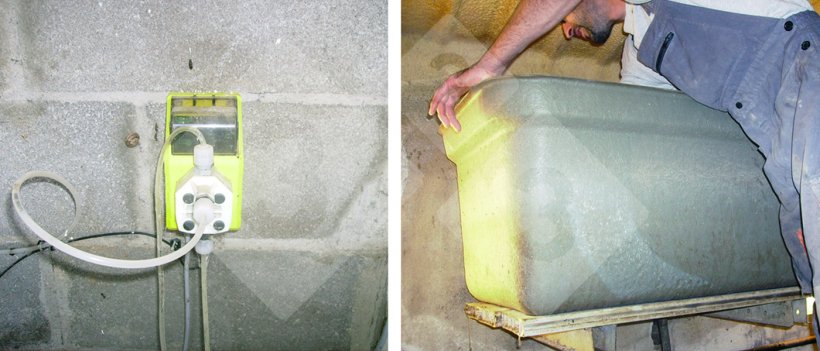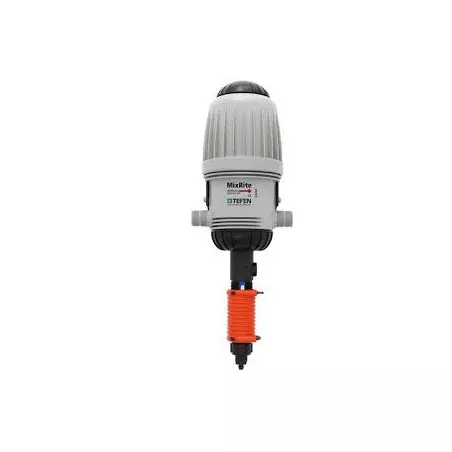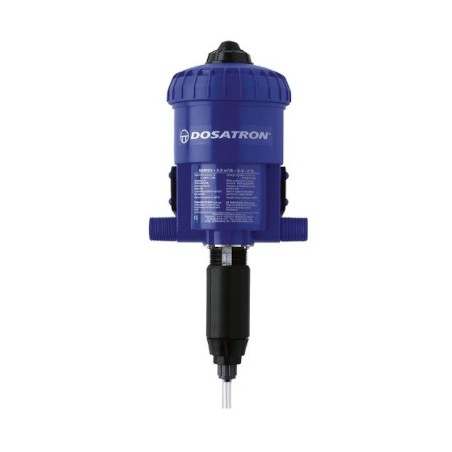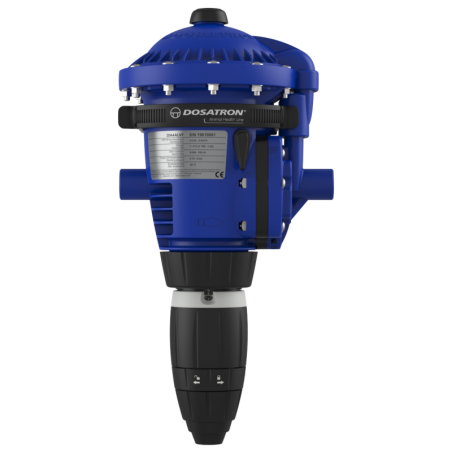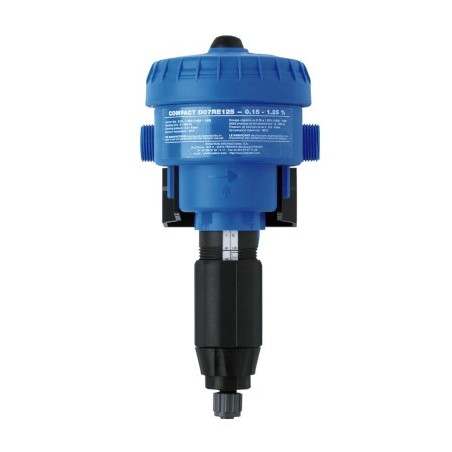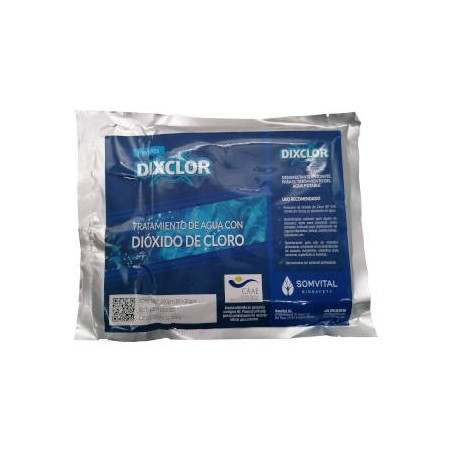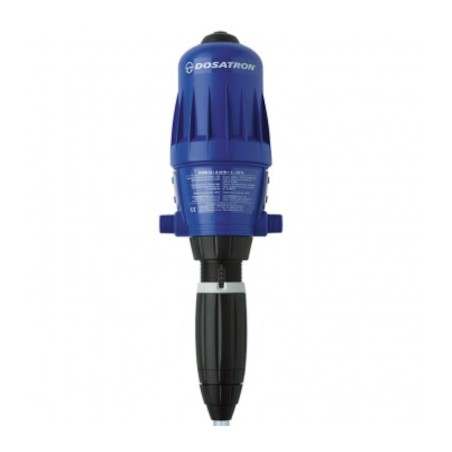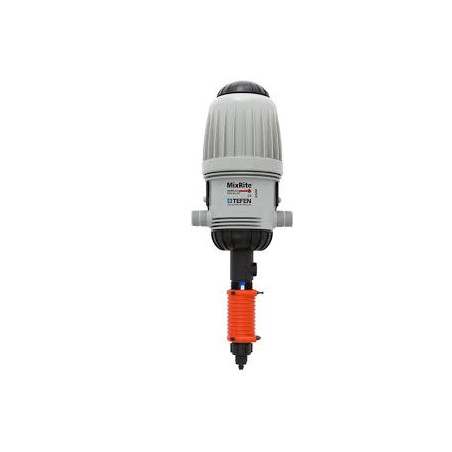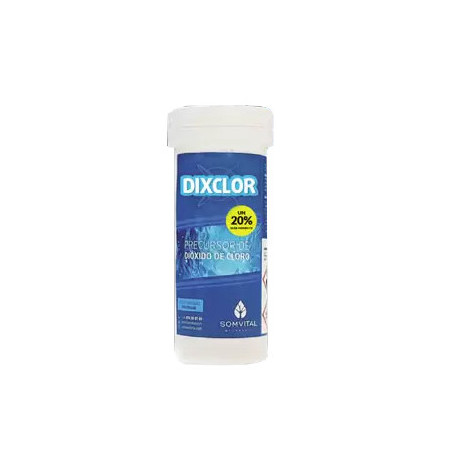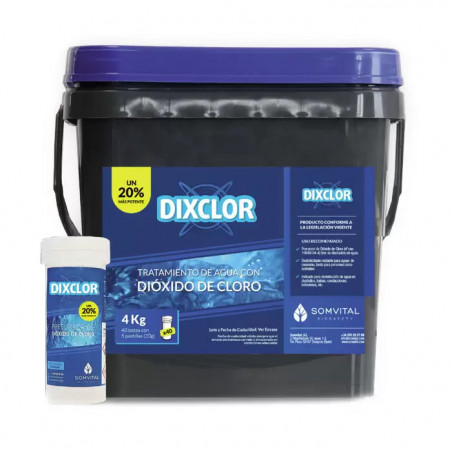1. Communication between the veterinarian and the farmer
The knowledge and experience of the veterinarian are important, but not enough. The most valuable information will be provided by the farmer because they know their pigs and many details that the veterinarian may not see or know. This bidirectional information is the key. Treatment is started when answering questions such as: What problem do we have? When was it detected? Which are the symptoms? What products do we have? Which strategy will we follow? Which installations do we have? etc.
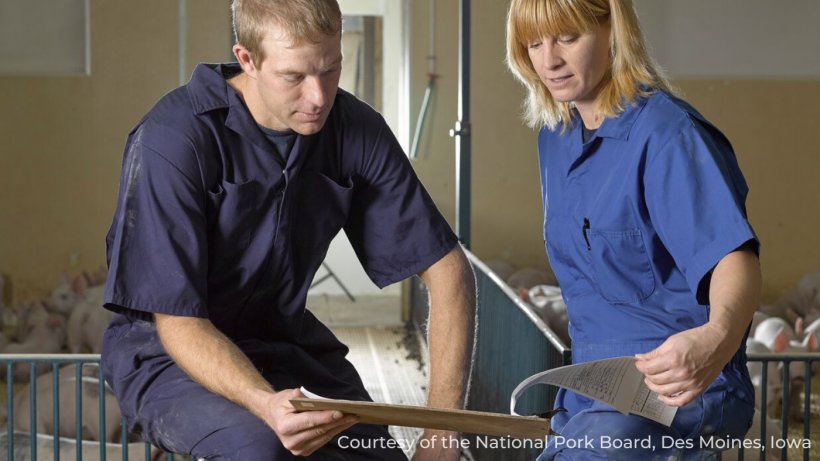
2. Strategy
The time used to make this decision is the most profitable investment in order to minimize the period between the appearance of symptoms and the start of the treatment; but we must not rush: a good diagnosis must include the "risk/cost/benefit" evaluation of the disease globally. The economic goal is not the only decision to make in a medication program.

3. Water quality
The term "water quality" is variable and it depends on climatic factors, soil characteristics, and human activity. It is obvious that the available water must be of good quality, but sometimes this is not controlled. Poor quality water does not only make medication ineffective, but it can pose a potential risk to the health of the pigs. The organoleptic, chemical, physical, and biological properties of the water must be kept constant and inside the safe range for pigs.
4. Solubility of the product
The solubility depends on the product and on the quality of the water. In this article we saw that the molecule must be capable of ionizing itself so it can be water-soluble, otherwise, it will settle. The synergic combinations of antibiotics are also very important in the final solubility of the mix. Two molecules will be more compatible if their acid-base characteristics are similar.

5. Stability of the product
A stable product will maintain its characteristics constant from the moment of its production until the expiry date. In this article we set out the chemical reactions in a "solid" state between the active principle and the excipient, the physical changes in the particles, and the environmental effect. In the "solution," we have the action of the temperature, the pH, the light, the oxygen, etc. This degradation causes instability, undesirable changes in the performance, and the degradation products can cause toxicity.
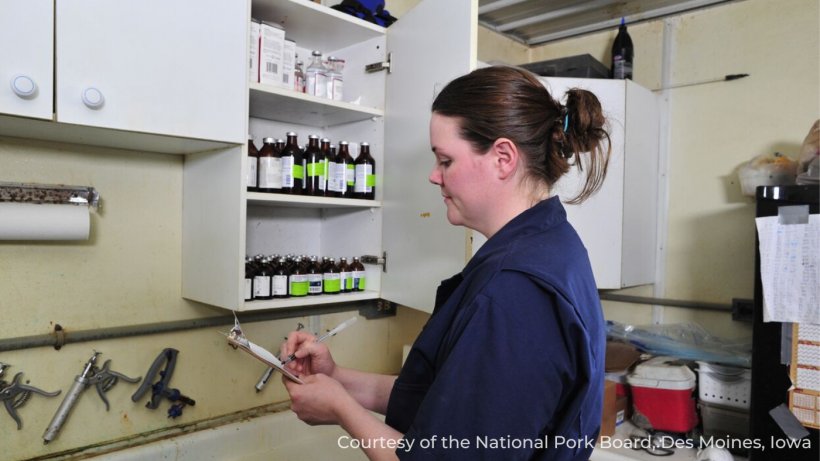
6. Medication and dosage
Knowing the medication systems and knowing how to dose are critical points in the medication. We have, basically, two systems, a flow dispenser and a tank, and each of them has advantages and disadvantages.

7. Therapeutic range
The dosage of a drug must be calculated in order to reach the necessary levels in the plasma to cause the desired therapeutic effect. An underdose, apart from not causing the expected therapeutic effect, makes the water more expensive, worsens the health and the performance of the animals, and, even worse, it raises the risk of generating resistance.
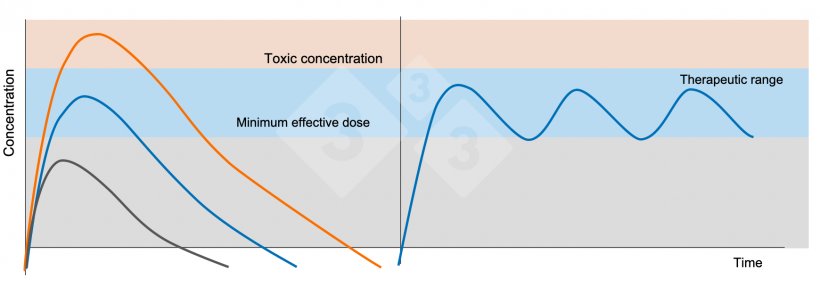
8. Installations
The starting point consists of having the installations in a perfect state of maintenance and choosing the correct medication so the animals receive the correct dose, avoiding crossed contaminations. The type of drinkers must be taken into consideration separately because there is a direct relationship between the savings in medication and the type of drinker (use, design, and location). When we talk about efficient medication we must control, globally, all the critical points of the installations:
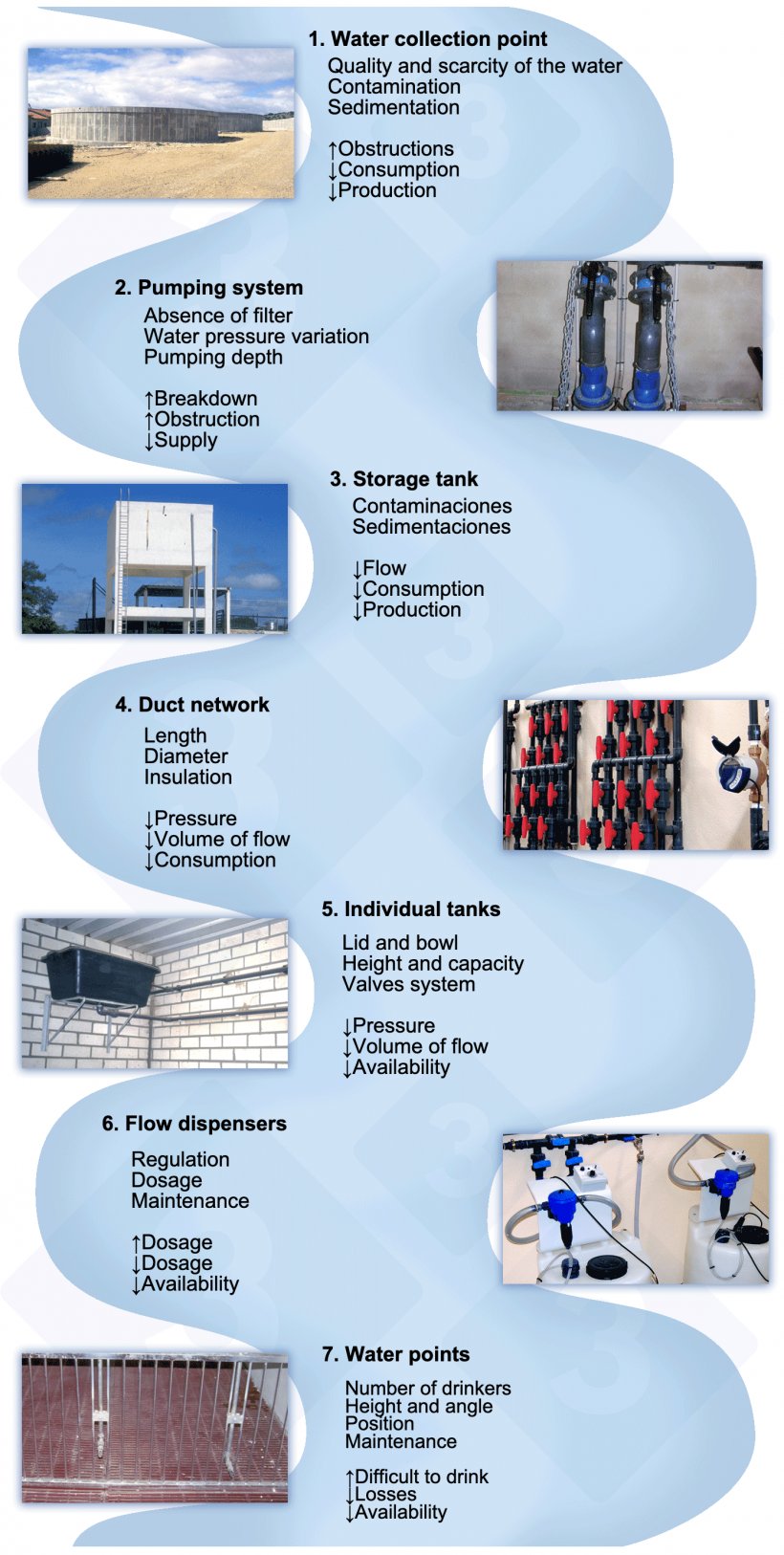
9. Consumption monitoring
The water requirements have never been defined properly, because many individual factors that are difficult to determine have an influence. There are many factors that have an influence for instance, the temperature of the environment and the water temperature, the relative humidity, the drinking pattern, the volume of flow, the kind of drinker, etc. Knowing the actual consumption by means of water meters should be a common practice in order to medicate correctly.
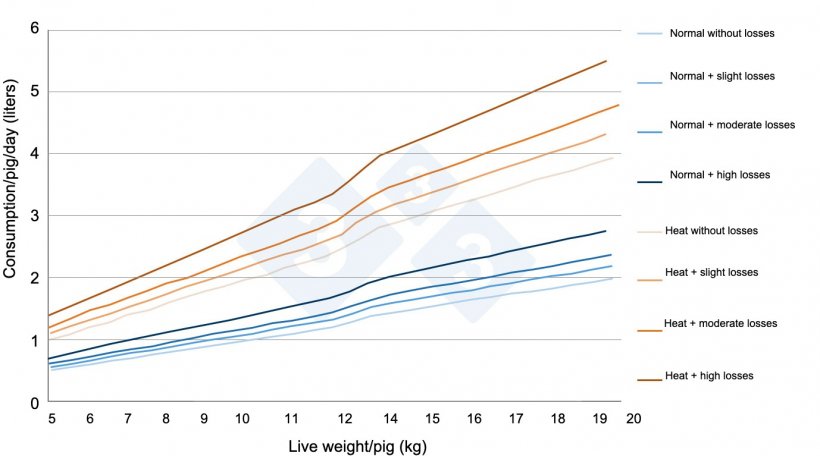
10. Drinking pattern
Knowing the behavior pattern of the pigs when drinking will be essential in order to carry out certain treatments. In field conditions, we see anomalous situations that can alter the normal pattern: for instance, the piglets that compete for the water during the day cause consumption peaks during the night, when they should be sleeping. We also distinguish the pattern according to the production stage: in the fattening stage, the temperature has an influence; in the pregnant sows, the feeding has an influence; and in the nursing sows, the milk production has an influence.

11. Maintenance and cleaning
The conclusions found in this article show the importance of cleaning after medicating and avoiding mixing products that can threaten the sanitary/productive development of the pigs and cause obstructions. During downtime and after having medicated the animals, we must control the critical points (design and maintenance) in order to maintain the biosecurity of this nutrient. Also, the amount and the quality of the water must be continuous through clean and disinfected pipes.
